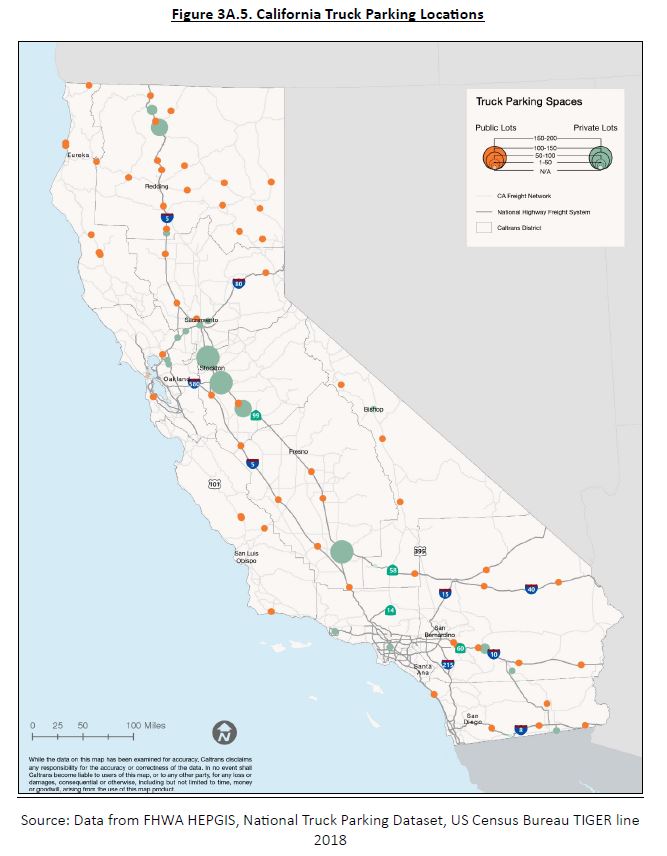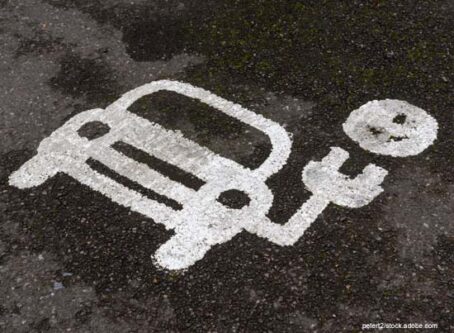California Freight Mobilty Plan includes several trucking-related objectives
Caltrans recently released its California Freight Mobility Plan, which details short- and long-term policies, strategies and investments. Trucking was a large focus, including parking, truck-only lanes, tolling and autonomous trucks.
On Monday, July 20, Caltrans published more than 300 pages outlining a plan for its freight system. A lot of space was dedicated to trucking, as trucks carry more freight in both value and weight than any other single mode in the state.
The California Freight Mobility Plan focuses on seven main goals:
- Economic prosperity.
- Environmental stewardship.
- Healthy communities.
- Safety and resiliency.
- Asset management.
- Connectivity and accessibility.
- Multimodal mobility.
Multimodal mobility
This section aims to maintain, enhance and modernize the multimodal freight transportation system by improving network efficiency and travel time reliability, and reducing congestion. Addressing bottlenecks is one key objective.
The plan calls for a feasibility study for dedicated truck lanes. This also included a possible truck-only toll or truck bypass lanes. If California decides to use a toll, it would use the money for infrastructure facilities and mass transit systems. Rhode Island has a similar toll, which is being challenged in federal court.
The California Freight Mobility Plan also calls for a feasibility study for a variable tolling pilot project for both passenger vehicles and trucks.
Caltrans suggests evaluating the existing Intelligent Transportation Systems. It wants to target truck data such as trips and parking. Along those lines, the agency wants to expand freight travel information availability. For example, Caltrans could share real-time traffic data with carrier company dispatchers and increase the number of dynamic messaging signs.
Truck platooning is also addressed. Potential pilot projects for truck platoons are seen “as a potential part of a future solution,” according to the plan. The pilot program would take place in rural and urban corridors.
Environmental stewardship
Another goal is to support strategies that reduce, avoid and/or mitigate adverse environmental impacts from the freight transportation system. Most of these objectives are indirectly related to trucking and are overshadowed by California’s Advanced Clean Truck regulations.
However, parking in urban areas is addressed. The plan suggests a strong parking pricing program in the urban core to limit competition for curbside commercial freight parking. According to the plan, the goal is to reduce truck vehicle miles traveled and emissions generated by “cruising for parking.”
Healthy communities
This goal is defined as enhancing “community health and well-being by mitigating the negative impacts of the goods movement system across California’s communities.”
One way truckers could be affected by this is losing certain routes. The plan suggests diverting truck traffic from heavily used routes to alternative routes that are further removed from residential neighborhoods. This may include requiring cleaner trucks in certain areas.
Also addressing parking, this section calls for local governments to encourage fixed, time-based vehicle size restrictions in their curbside parking. One way to do this is prioritizing different modes by time of day.
Safety and resiliency
The goal is to “reduce freight-related deaths/injuries and improve system resilience by addressing infrastructure vulnerabilities associated with security threats, effects of climate change impacts, and natural disasters.”
Again, truck parking is addressed here. However, this time truck parking is the main focus. Rather than call for more studies, Caltrans wants to execute the recommendation from the 2020-21 California Truck Parking Study and expand existing public and private sector truck parking facilities. The study also called for creating new ones. To enhance safety, the state would also place cameras and other technologies in truck parking areas.
With wildfires and earthquakes, California is vulnerable to economic disruptions from natural disasters. The California Freight Mobility Plan addresses this by suggesting an alternative routes study to make sure freight movement continues during and immediately following a disaster.
Technology making trucking decisions easier is also included. Vehicle-to-vehicle and vehicle-to-infrastructure tech will give truckers advanced information on congestion, safety hazards, and traffic information (i.e., red light count down, speed limits, etc.).
Asset management
Essentially, this refers to maintaining and preserving infrastructure assets. What the state can do is limited by the FAST Act, state highway code and Caltrans policy.
Directly related to trucking, the plan wants to expand truck scale and weigh-in-motion technology. The state will look for more locations to install weigh-in-motion stations. According to the plan, such stations are lacking near many port locations.
Other California Freight Mobility Plan objectives
Nearly everything contained within the freight plan has some effect on the trucking industry. Most freight shipments arrive on a truck, even if the original mode was through air, vessel or rail. Anything that directly affects those modes has the potential for a trickle-down effect on trucking.
California is trying to reduce trucking costs by addressing the following, either directly or indirectly:
- Increasing capacity efficiency on state highways and local roads to reduce congestion.
- Deploying technologies to reduce congestion and trucking costs.
- Providing greater financial assistance to ease emissions limits, clean truck requirements, and clean fuel taxes.
- Reducing truck driver time spent at marine terminals and other freight facilities.
- Improving truck driver training to increase the supply of drivers.
- Increasing the supply of truck parking in public locations.
Although the California Freight Mobility Plan expresses concern over truck safety, Caltrans notes that truck drivers are mostly not at fault for fatal crashes.
In 2015, the California Highway Patrol reported that out of the 4,764 drivers involved in fatal traffic collisions, 315 collisions involved trucks, and the truck driver was at fault in 74 incidents, according to statistics included in the plan.
“This data indicates that automotive drivers involved in fatal collisions with trucks were far more likely to be at fault than the truck driver,” Caltrans states.
Nonfatal, injury crashes yield similar results. Of the 329,509 injury collisions in 2015, there were 8,598 that involved trucks. In 2,693 incidents, the truck driver was at fault. Drivers in passenger vehicles alone or pulling a trailer were at fault in 1,489 fatal and 114,433 injury collisions. Of the 2,693 collisions in which the truck driver was at fault, 1,153 occurred due to unsafe speed and 881 occurred due to unsafe lane changes or improper turning.
To read the full plan, click here.









